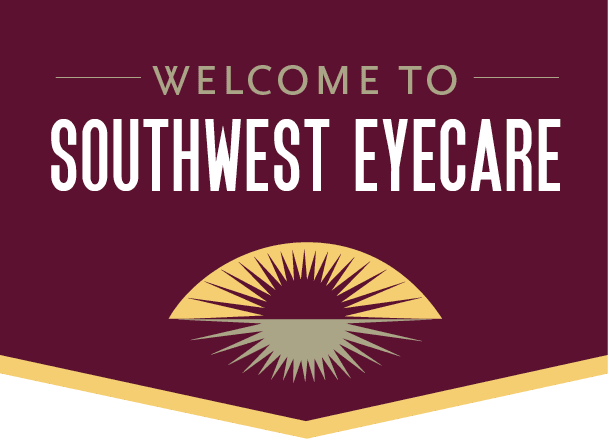Presbyopia
If you’re over the age of 40 and you’ve noticed slight or sudden changes in your vision recently, it may be presbyopia. Presbyopia, or age-related farsightedness, is simply a term that indicates your eyes’ inability to focus on objects that are close to you. The designation of “farsightedness” may be confusing as it doesn’t mean that you can’t see far away — it actually indicates that you need to hold books and other reading material farther away from your eyes to read it correctly. If you find yourself searching for “what is presbyopia” more than usual lately, look over the following symptoms to determine whether you may be struggling to read because of this common condition and learn about treatments that may work for your lifestyle.

Presbyopia Symptoms
Though farsightedness can be a normal (but irritating) part of aging, presbyopic symptoms shouldn’t rule your life or your choice of daily activities. If you’re middle-aged and you notice the following three symptoms interfering with your reading, working, or other activities, give us a call for a thorough presbyopia evaluation.
Holding Books, Newspapers, and Menus At Arm’s Length
You may have once poked fun at your mother for squinting and holding her menu as far away from her face as possible while reading, and now you’re doing the same thing! Though this is often seen as a funny quirk of those entering middle age, it is actually a symptom of age-related farsightedness that should be checked out by an ophthalmologist.
Suffering From Headaches After Reading
Frequent headaches can be a symptom of multiple illnesses, including dehydration — but if you notice pain around your eyes after reading or doing work that involves using your eyes at close distances, you may be noticing a symptom of presbyopia. These activities include writing, sewing, crafting, and others.
Worsening Symptoms When Working in Low Lighting
If you’re concerned about your close-up vision in dim lighting, or if you notice that your farsightedness becomes dramatically worse by lamplight, you’re not alone. Many patients find that their presbyopia is more pronounced in low-light conditions.
What Causes Presbyopia?
Entering middle age is one of the main causes of farsightedness, and though this can be normal for many people, it is not the only cause of presbyopia. This is why it’s important to have a thorough medical evaluation by an ophthalmologist — not an optometrist — to discern what’s causing your condition.
Age-Related Hardening of the Lens
Several structures in your eyeball are involved in processing visual images. The small, clear lens within your eye refracts light to help your retina figure out what you’re looking at. When it hardens (a normal phenomenon in most aging people), it becomes less able to bend and focus on what’s right in front of you. This lack of flexibility in the lens usually results in presbyopia.
Medical Illnesses or Conditions That Affect the Eyes
It’s important not to assume that all cases of farsightedness are related to aging. If you have a medical condition such as multiple sclerosis or diabetes — both of which can affect parts of the eyes, including the optic nerve — you should undergo a checkup to determine if the disease has accelerated your risk of presbyopia. People with these conditions may suffer from farsightedness at younger ages.
Prescription Drug Use
Prescription drugs that are often used to treat common, minor illnesses such as seasonal allergies, as well as those used for depression, can cause presbyopia in some patients who are younger than middle age. If you are concerned about your medications and eye health, speak to your ophthalmologist today.
What Are the Treatments for Presbyopia?
Presbyopia can be successfully treated in many ways. Read through the following options to determine which you would like to speak to your ophthalmologist about at your appointment.
Reading Glasses, Bifocals, and Trifocals
Simple reading glasses you purchase at the drugstore may do the trick — or they may not be strong enough to give your eyes what they need. We can offer bifocals and trifocals that help you meet your vision goals as well as regular glasses.
Contacts
Contacts are a popular choice for those who live with presbyopia, and these small, flexible lenses are often preferred by patients who have never had to wear glasses before. Monovision contacts can correct presbyopia, but you may need to wear multifocal contacts (similar to bifocal or trifocal glasses) to help your eyes focus on multiple distance points without eyestrain.
Surgery
Surgery is often the last resort for presbyopia, but it is the ideal option for some patients. Refractive surgery can reshape the cornea to return the eye to a monovision state — but you may want to try monovision glasses or lenses to determine whether this option is right for you. Small implants called corneal inlays can also help patients with more severe farsightedness that has not been resolved using glasses, contacts, or refractive surgery.
Presbyopia Treatment in Albuquerque, New Mexico
Many medical conditions can cause presbyopia, but the most common cause is simply aging. To determine why your eyes are not focusing as well as they used to, give us a call at 505-346-0500, send us an email, or log into your patient portal to schedule a full evaluation with our ophthalmologists at Southwest Eyecare in Albuquerque. We look forward to meeting you!
Image Source: YAKOBCHUK VIACHESLAV/ Shutterstock

